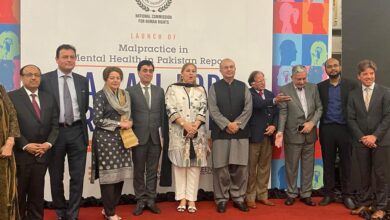
Water is essential, a source for all life. It covers more than two thirds of the planet, where most is undrinkable salt water from oceans and seas. Only 0.5 per cent of the earth’s total water is fresh water that can be used in daily activities.
Pakistan was once considered the most water-rich country, but it is now facing water shortage problems in its urban and rural areas. Despite being a heated topic, there is still uncertainty about the nature of the country’s water crisis, and exploring the water crises in Pakistan will offer possible solutions and better understanding to these basic water problems.
Pakistan owes its water crisis to the inaccessibility of drinkable water, water scarcity, institutionalisation and poor management of water resources, and the impending dangers of climate change. It is facing severe problems with the management and accessibility of clean water, particularly in the expanding metropolis like Karachi where the problem is more severe. It is alarming that only 20 per cent of the entire population has access to clean drinking water. Industrial and residential trash being thrown into rivers and lakes is the main reason for the poor quality of the water. This aspect directly affects people’s health as they are at risk of contracting water-borne diseases. As per figures, 15 per cent of the child population dies due to diarrhoea.
When the British departed the Indian Subcontinent, they did not anticipate how India and Pakistan would share the Indus River System. As all the rivers flow from India to Pakistan, India cut off complete water supply to Pakistan soon after independence from the British. After this incident, both countries plunged into a war that allowed the World Bank to work as arbitrators to solve the issues. This led to the Indus Water Treaty, according to which Pakistan received the western rivers of the Indus River System (Indus, Jhelum, Chenab), while India received the eastern ones (Ravi, Beas, Sutlej).
The population of India has grown significantly over time, and as a result, their water needs have also increased tremendously. India has constructed multiple dams on rivers in Pakistan because of its increasing water and power demands. Due to a long history of conflicts between the two nations, this act of India has become a source of disagreement. Pakistan’s water demands have not yet been affected by the Indian dam plans, but it will indeed affect Pakistan in the future.
Water is a significant point of contention in local politics. Dam construction is the top political concern in Pakistan. Smaller provinces like Sindh and Balochistan worry that some dam development projects will dry up their agricultural fields. The Indus River System Authority (IRSA) distributes water between all four provinces. Sindh, however, claims that Punjab is consuming more than its fair share through flood irrigation.
Pakistan also lacks water storage facilities like dams, which often result in water scarcity and flooding across the country. In 1976, the water storage capacity of Pakistan was 16.27 million acre-feet (MAF), which has decreased to 13.67 MAF, a hardly 30 days’ storage capacity. Pakistan must enhance its water storage capacity to prevent extremes like droughts and floods. The recent flooding of 2022 caused $45 billion to Pakistan’s unstable economy. These floods will only worsen if we work on enhancing the country’s water storage capacity. Moreover, the institutional arrangements for managing the water resources of Pakistan are one of the biggest problems. The poor management of the water resources has increased the political problems that make it challenging to find solutions to the water dilemma.
One of the most alarming issues is climate change at present. Pakistan is ranked among the 10 countries most vulnerable to the effects of climate change. The recent flooding of 2022 is one of the signs of what is to come. Water problems will surely get worse due to climate change. Supply of fresh water is being depleted and flooded due to the melting glaciers in the north. In short, Pakistan has a challenging future ahead in terms of water problems.
Possible solutions for Pakistan must begin with gathering information and conducting a requirements analysis to address the country’s water crisis. Basic information on Pakistan’s water resources and depletion rate has yet to be made available. Most of the data used in the water projects are hypothetical or based on expert judgement. Water requirements for all needs are also necessary. The Pakistan Council of Research in Water Resources (PCRWR) is assessing crop water requirements, which is essential for residential consumption and all economic sectors.
Pakistan also needs to manage its water resources effectively. The economy, employment, and size of the agriculture sector are all declining, but still it is responsible for most water usage. We should switch to a shower in place of the flood irrigation technique. But we need to implement the shower technique in rice farming. Another measure is to charge a use-based price for water usage instead of a fixed fee. This measure will encourage water conservation.
Pakistan must also build water filtration facilities to give its citizens safe drinking water. Moreover, it must clean the lakes and rivers that supply water to its cities. We must also build more storage facilities. Smaller and bigger dams should be constructed that do not spark political conflict.
We are facing a severe water problem, but our timely attention can manage this problem. Problem-solving is difficult due to the politics around water, and resource mismanagement is making matters worse. A water conservation mindset must be instilled in the people, and water waste in agriculture must be considered seriously.





